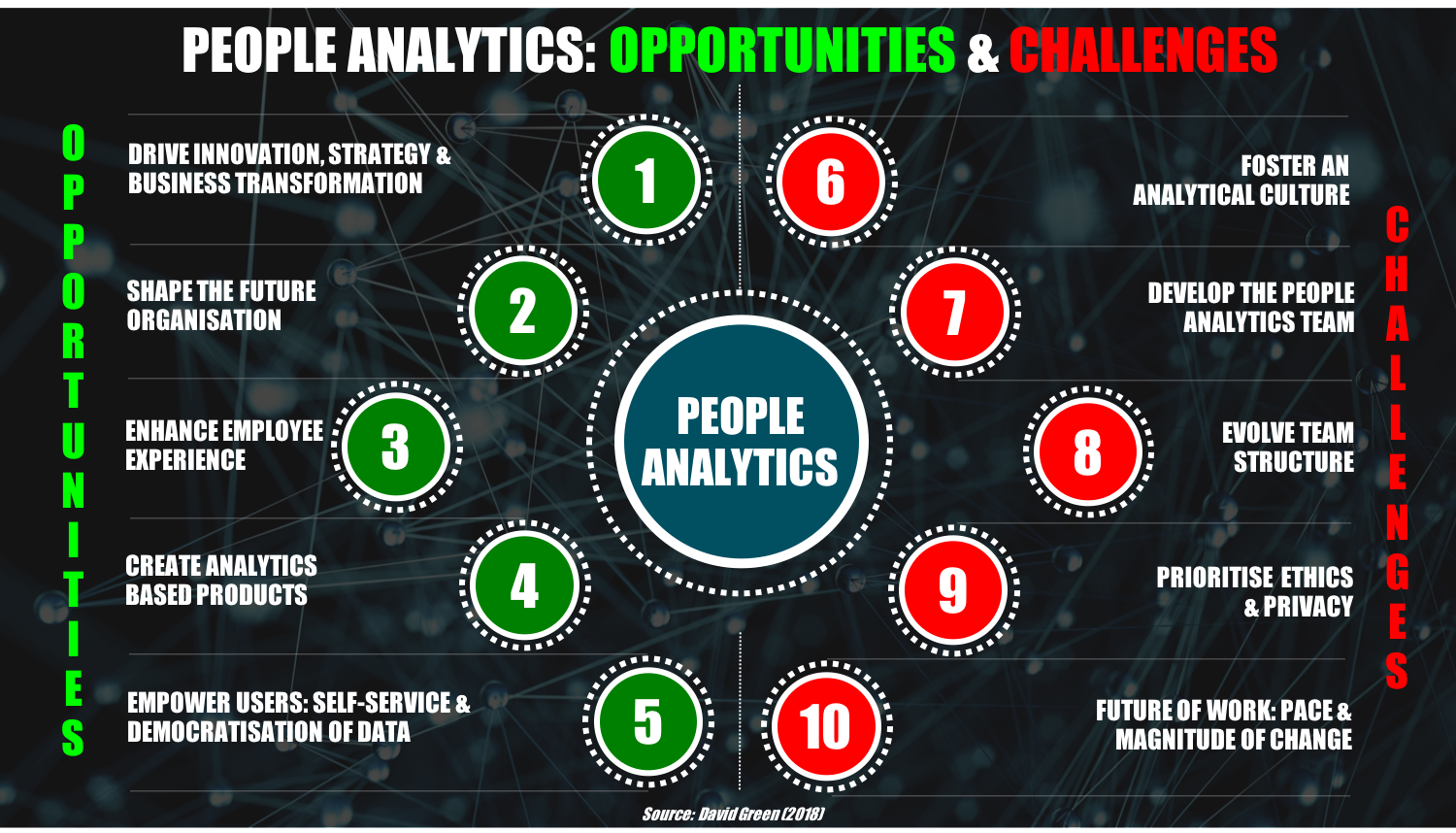April was a momentous month both personally for me and also, I believe for the field of people analytics too.
From a personal perspective, I left IBM to go out on my own, launched my new website and blog (where the next monthly collection of articles will be published - please feel free to subscribe here) as well as gladly accepted board advisor roles with Insight222 (see here) and TrustSphere (here).
I feel fortunate that these exciting personal developments appear to be timed in parallel with real signs that the field of people analytics is maturing and undergoing rapid growth. Deloitte’s 2018 Global Human Capital Trends survey was published at the beginning of the month and reported that 84 percent of respondents (see Figure 1 below) viewed people analytics as important or very important, making it the second highest ranked trend in terms of importance (a surge from being ranked eighth in 2017).
Figure 1: The top 10 trends highlighted in Deloitte's 2018 Global Human Capital Trends report by importance and readiness (Source: Deloitte Global Human Capital Trends, 2018)
This sea change in the level of importance attributed to people analytics was also obvious at the People Analytics World conference, I chaired in London in April. As Andrew Marrittwrites in one of the articles below, the focus of the presentations at the conference were centred on the business (and employee) value of people analytics. This shift is a sign that the field is maturing and importantly gaining in confidence as it is only through quantifying business value that the discipline will continue to thrive, gain investment and become a core component not just of HR but of executive decision making.
The progress of the field and its increasing importance to organisations and the future of HR is also reflected in the articles, podcasts and videos I have selected this month, which kicks off deservedly with:
1. DELOITTE 2018 GLOBAL HUMAN CAPITAL TRENDS 2018 | DIMPLE AGARWAL, JOSH BERSIN, GAURAV LAHIRI, JEFF SCHWARTZ AND ERICA VOLLINI – People data: How far is too far?
As usual Deloitte’s aforementioned Global Human Capital Trends report is well worth all the hype and anticipation associated with it. The headline finding in the 2018 report is the rapid rise of the social enterprise, which the report defines as reflecting the “growing importance of social capital in shaping an organisation’s purpose, guiding its relationships with stakeholders, and in influencing its ultimate success or failure”. The entire 102 page report is an absorbing read, but the people analytics chapter is particularly fascinating. Titled ‘People data: How far is too far’, the authors describe the rapid growth of the field, the increase in the number and type of data sources being used, and the consequent risk this poses to privacy and data security. The article highlights a potential blind spot (see Figure 2), where whilst organisations are actively managing the risks of using people data around employee perceptions and legal liability, only a quarter are managing the potential impact on their consumer brand. Ethics is arguably the most important part of people analytics and the biggest risk to its progress - the findings in the report only go to reinforce this.
"Organisations are approaching a tipping point around the use of people data, and those that tilt too far could suffer severe employee, customer, and public backlash"
FIGURE 2: When it comes to using people data, organisations are actively managing risks around employee perceptions and legal liability, but only a quarter are managing the potential impact on their consumer brand (Source: Deloitte Global Human Capital Trends)
To read the remaining articles and podcasts in my collection for April, please click on the link here to read it on LinkedIn: The best HR & People Analytics articles of April 2018














